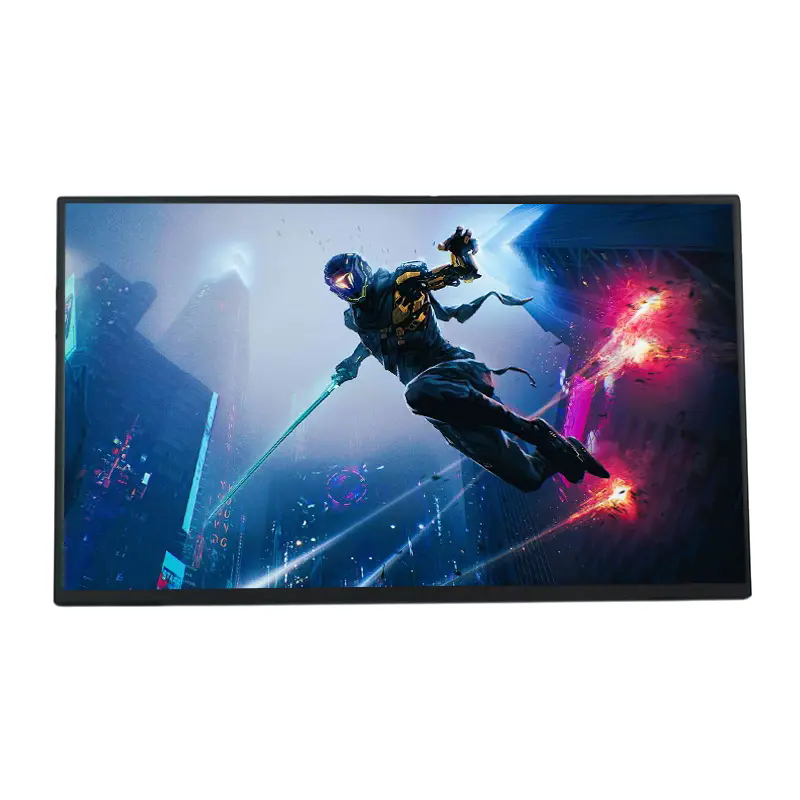Why Are Portable Monitors Becoming a Must-Have for Modern Work and Play?
2025-01-02
In an era where multitasking and flexibility are key to productivity, portable monitors are rapidly gaining popularity among both professionals and casual users. Whether you're a remote worker, a gamer, or someone who simply needs more screen real estate on the go, a portable monitor could be the perfect solution for your needs. But why exactly are portable monitors becoming a must-have tool in today’s tech-driven world?
In this blog, we’ll explore the reasons behind their increasing popularity, how they can improve your work and entertainment experience, and what to look for when choosing the best portable monitor.
What Exactly Is a Portable Monitor?
A portable monitor is a slim, lightweight external screen that can easily be connected to a laptop, smartphone, or gaming console to extend your display. Unlike traditional monitors, portable screens are designed for portability—easy to carry in a backpack or laptop bag and convenient to set up wherever you need them.
Portable monitors come in a variety of sizes, typically ranging from 13 to 17 inches, and are powered either through a USB-C or HDMI connection, making them compatible with a wide range of devices. They offer the same features as regular monitors—high resolution, touch-screen options, and built-in speakers—but in a more compact and mobile format.
Why Are Portable Monitors So Popular?
1. Enhanced Productivity on the Go
One of the biggest advantages of using a portable monitor is the ability to boost productivity. Many people work with multiple applications or documents at the same time, and having just one screen can be limiting. By adding a second screen, you can easily split tasks across two windows, compare documents side-by-side, or even video conference while working on a separate file.
For remote workers or digital nomads, the ability to have an extended desktop anywhere—whether it’s in a coffee shop, a client meeting, or a hotel room—is a game-changer. With a portable monitor, you can seamlessly transition between different workspaces while maintaining an efficient workflow.
2. Improved Gaming Experience
Portable monitors are also becoming a favorite among gamers who need extra screen space for mobile gaming or want to enjoy a larger display while on the move. The portability of these monitors allows gamers to set up a mini gaming station wherever they go. Many portable monitors offer high refresh rates and low response times, which are critical for a smooth gaming experience.
Gamers who travel frequently or prefer playing on the go can pair their console or gaming laptop with a portable monitor for a better gaming experience than relying on a small laptop screen or built-in device screen.
3. Great for Presentations and Collaboration
For business professionals or anyone who needs to present information on the go, a portable monitor offers a great solution. Whether you’re giving a presentation to a small team, reviewing designs with a client, or displaying graphs during a meeting, having an extra monitor can make the process easier and more effective.
Portable monitors are lightweight and compact, making them easy to transport from meeting to meeting. Additionally, many of them come with built-in stands and smart covers, so you can set them up in seconds and focus on the task at hand.
4. Easy Setup and Compatibility
Gone are the days when setting up additional displays involved complicated installations and bulky hardware. Most portable monitors today are plug-and-play and offer universal compatibility with a range of devices, including laptops, tablets, smartphones, and gaming consoles.
With the introduction of USB-C and HDMI connections, connecting your device to a portable monitor has become incredibly easy. No external power source is usually required, as these monitors often draw power directly from your device, though some models may come with their own power adapters for more demanding setups.
5. Compact and Travel-Friendly
One of the main selling points of portable monitors is their compact design. Weighing as little as 1 to 2 pounds and measuring less than an inch thick, they are perfect for travel. Whether you’re a digital nomad, a frequent business traveler, or someone who needs extra screen space at the coffee shop, a portable monitor is easy to carry and doesn’t take up too much space in your bag.
For those who don’t want to carry around a bulky laptop or work with limited screen size, portable monitors offer the perfect balance of functionality and portability.
What to Look for When Choosing a Portable Monitor
While portable monitors offer great benefits, there are several factors to consider when choosing the right one for your needs:
1. Size and Resolution
Portable monitors typically range from 13 to 17 inches. Consider the size that best suits your work or entertainment style. If you’re mostly working on documents or emails, a 13 to 14-inch screen might be sufficient. For gaming or video editing, you may want a larger display—15 inches or more—with higher resolution (1080p or even 4K if budget allows).
2. Connectivity
Make sure the monitor is compatible with the devices you plan to use it with. Most portable monitors offer USB-C or HDMI connections, but check whether the monitor requires specific cables or additional adapters. USB-C is the most modern and convenient option for power and video transmission, but some older laptops or devices may still require HDMI.
3. Portability and Weight
When purchasing a portable monitor, consider how often you’ll be carrying it with you. Look for lightweight models (ideally under 2 pounds) that are easy to pack and don’t add much bulk to your travel gear.
4. Touchscreen Features
Some portable monitors offer touchscreen functionality, which can be an advantage for certain applications, such as drawing, design work, or navigating software quickly. If this is important to you, be sure to choose a touchscreen model that meets your needs.
5. Battery Life
Many portable monitors are powered by your device, but some come with a built-in battery. If you're planning to use the monitor without having your device constantly plugged in, choose a model with good battery life that can last several hours without draining.
6. Price vs. Features
Portable monitors come in a wide range of price points, depending on features like resolution, screen size, and additional functionalities (like touch capabilities or built-in speakers). Evaluate the features that matter most to you and ensure the price aligns with your budget.
Conclusion
Portable monitors are revolutionizing the way we work and play, offering a flexible, space-saving solution for those in need of additional screen real estate. Whether you're a remote worker seeking to enhance productivity, a gamer looking for a portable display, or a business professional needing a lightweight presentation tool, portable monitors provide a convenient and versatile option.
By investing in a portable monitor, you’re not only improving your workflow and efficiency but also gaining the freedom to work or entertain yourself wherever you are. As technology continues to evolve, portable monitors will undoubtedly become an even more indispensable tool for modern users.



